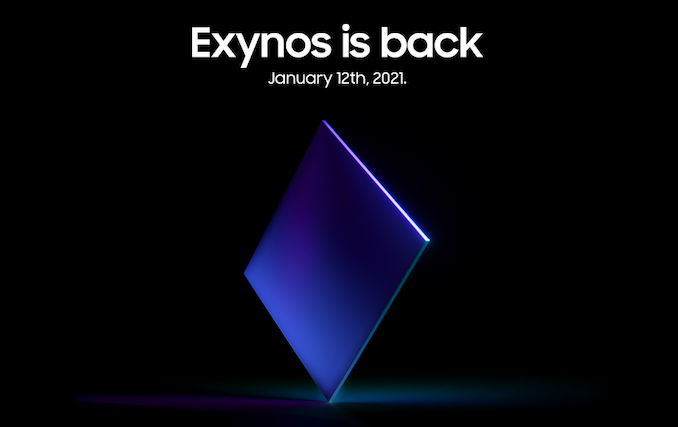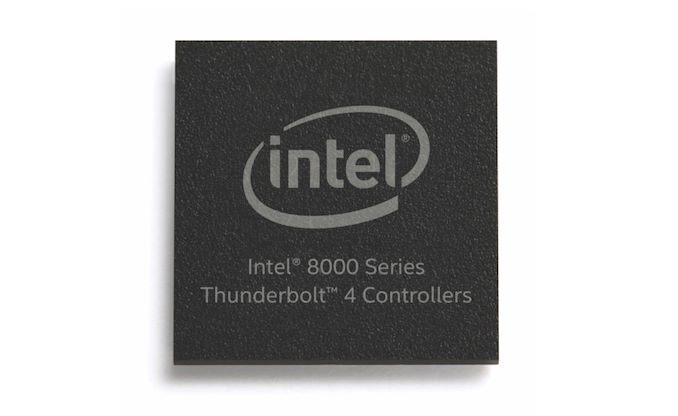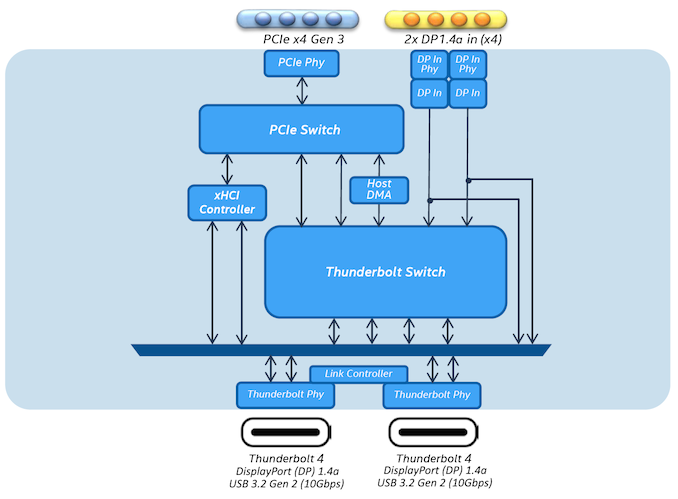Results 10,911 to 10,920 of 12096
Thread: Anandtech News
-
12-17-20, 11:18 AM #10911
Anandtech: The MSI Prestige 14 Evo Review: Testing The Waters Of Tiger Lake
MSI is very well-known for their gaming products for the PC market, from motherboards, accessories, and right up to gaming laptops and desktops. The company was one of the first to focus almost exclusively on their gaming lineup, and that focus has made them very successful in that market. In the laptop space, MSI’s gaming lineup are some of the best systems around, even if they do often come with a price premium. But, while the gaming market has been strong even throughout some PC sales slowdowns, MSI is again dipping their toes in a wider market. The MSI Prestige series of laptops abstain from the gaming nomenclature, design, and marketing. The Prestige series targets a much more traditional Ultrabook buyer, with a thin, light design, quality materials, and less RGB.
The MSI Prestige 14 Evo, as the name suggests, is a 14-inch laptop which offers the modern design touches of an aluminum chassis, with thin display bezels, packing plenty of notebook into a smaller footprint. The 16 mm thick design weighs in at just 1.29 Kg, or 2.84 lbs, making it very portable for a 14-inch device.
More...
-
12-18-20, 08:48 AM #10912
Anandtech: Qualcomm Discloses Snapdragon 888 Benchmarks: Promising Performance
Today Qualcomm is disclosing a set of benchmark results for the new Snapdragon 888 SoC that’s set to power next year’s flagship Android devices. Usually, as years past, we would have had opportunities to benchmark Qualcomm’s reference designs ourselves during the chipset launch event, or a few weeks later during CES – however due to obvious circumstances this wasn’t possible this year.
As an alternative, Qualcomm is therefor sharing with the press a set of benchmark results on their new Snapdragon 888 reference design phone. Usually, the point of having the press benchmark the devices themselves is that it adds independent verification of the benchmark scores. This time around we’ll have to make a little leap of faith in the accuracy of Qualcomm’s numbers – of course we still pretty much expect the figures to be accurate and be reproduced in commercial devices.
More...
-
12-18-20, 08:48 AM #10913
Anandtech: Samsung Teases CES Announcement For Next Exynos SoC
Samsung this morning has dropped as brief teaser about their next-generation Exynos SoC. Dubbed “Exynos is back”, Samsung is revealing that there will be a proper announcement for the new SoC on January 12, which would fall on the first full day of CES.
Being that this is a teaser, any details are non-existent. But it’s worth noting that Samsung is promising “A whole new Exynos is coming”. Which hopefully is a sign that Samsung has spent the last couple of years hard at work on improving their future designs.
Although the most recent high-end Exynos designs (e.g. Exynos 990) have been decent, they’ve been overshadowed by rival Qualcomm’s designs – not to mention Apple’s own market-leading parts. The last few iterations of the chip have used Samsung’s own in-house CPU core design, which never worked out quite as well as Samsung was hoping for, both in overall performance and in keeping ahead of Arm’s own licensable designs.
Fittingly, Samsung has previously confirmed that they'll be (back to) using Arm's cores in future designs, particularly the the Cortex-X1, Arm's big effort to double-down on overall CPU performance. So it's pretty much guaranteed that Cortex-X1 will show up in Samsung's next-gen SoC – especially if they want to compete with Qualcomm's X1-equipped next-gen Snapdragon.
In any case, we’ll have more on the matter in a few weeks, when Samsung makes their announcement. So stay tuned.
#Exynos_is_back
A whole new Exynos is coming.
January 12th, 2021. pic.twitter.com/d85kT9Xvru
— Samsung Exynos (@SamsungExynos) December 18, 2020
More...
-
12-21-20, 10:32 AM #10914
Anandtech: Supermicro C9Z490-PGW Motherboard Review: Comet Lake with 32 CPU PCIe Lane
More widely known for its server-grade models, Supermicro always launches a small number of consumer motherboards, sometimes with some extra flair and hardware we don't see from the regular vendors. This time around, Supermicro's top-tier C9Z490-PGW uses a PLX chip which enables the board to operate with dual PCIe 3.0 x16 or quadruple PCIe 3.0 x8 slots. This is combined with dual PCIe 3.0 x4 M.2 slots from the chipset, a 10 gigabit Ethernet controller, and a Wi-Fi 6 interface which makes the C9Z490-PGW versatile for a wide array of users.
More...
-
12-22-20, 08:27 AM #10915
Anandtech: ECS LIVA Z3 Plus Review: Compact Comet Lake NUC Clone Cuts Corners
ECS is a well-known OEM in computing circles, known for building motherboards, computers, and industrial / embedded systems for other vendors. Some of their motherboards and small form-factor PCs are marketed under their own brand name - for example, their LIVA series of ultra-compact form-factor (UCFF) machines serves markets that are not directly addressed by the Intel NUCs. At the 2020 CES, the company introduced the LIVA Z3 Plus and LIVA Z3E UCFF machines based on the Comet Lake-U processors from Intel. The Z3 Plus has four variants, two based on Core i7 processors and one each based on the i5 and i3 SKUs. This review takes a look at the performance and value proposition of the pre-built Core i5-based LIVA Z3 Plus offering available in the North American market.
More...
-
12-23-20, 10:05 AM #10916
Anandtech: Intel's Maple Ridge (JHL8540) Thunderbolt 4 Controller Now Shipping
Following the launch of Thunderbolt 4 earlier this year as part of Intel's Tiger Lake CPUs, the next piece of the TB4 hardware stack has dropped this week with the release of Intel's first stand-alone Thunderbolt 4 controller, Maple Ridge (JHL8540). Previously announced back in July as part of Thunderbolt 4's reveal, Intel this week updated their Ark database to add a product page for the Maple Ridge controller family and flag that the first part is now shipping. With the release of the discrete Thunderbolt 4 controller, it will now be possible for hardware vendors to build TB4 hosts with additional ports, or in devices not using Intel's Tiger Lake Silicon.
This late-December launch follow's Intel's previous roadmap, which had the launch of standalone controllers set to take place before the end of 2020. These included the Goshen Ridge (JHL8440) device controller – for use in docks and peripherals, and the Maple Ridge (JHL8540 and JHL8340) host controllers – for use in computers, tablets, and other client devices. Goshen Ridge went into production soon after the announcement. And with the release of Maple Ridge Intel has also kept its promise here, getting it out just prior to the end of the year.
For quite some time, Thunderbolt ports were found only on systems with Intel processors. However, last year we saw vendors such as ASRock innovate with the introduction of a Thunderbolt 3 port on the X570 Phantom Gaming-ITX/TB3, an AMD Ryzen platform motherboard. This was followed a few months back by the introduction of M1-based Macs featuring Thunderbolt 3 (backed by Apple's in-house controllers). The use of Maple Ridge will now enable motherboard vendors to create systems with Thunderbolt 4 ports that do not necessarily need to be based on Intel processors.
The JHL8540 Maple Ridge controller interfaces with the host processor using a PCIe 3.0 x4 link and also takes in two Display Port 1.4a inputs. On the downstream side, the controller enables two Thunderbolt 4 ports, which along with their native Thunderbolt (packet encapsulation) abilities can also be used as straight-up USB4 ports, or as DisplayPorts via USB-C's DP alt mode.
The PCIe switch and, in general, the PCIe support in Maple Ridge has been updated to work with many optional features, keeping security in mind and the rich variety of PCIe devices coming into the market. For example, Maple Ridge includes PCIe peer-to-peer support which allows two PCIe devices connected to the two Thunderbolt 4 ports to exchange data with each other without having to make it travel upstream to the host RAM. From a security viewpoint, Access Control Services (ACS) is also supported to provide isolation between different sets of PCIe devices and make them always go through the IOMMU. Precision Time Measurement (PTM) is also a supported feature, allowing different downstream PCIe devices to accurately synchronize with each other and the host system.
It must be noted that Thunderbolt 4 brings more guaranteed bandwidth to end-users. With Thunderbolt 3, device vendors could skimp on the connection of the controller to the host processor – using only a PCIe 3.0 x2 upstream link instead of PCIe 3.0 x4, but still obtain Thunderbolt 3 certification. This reduced the minimum available PCIe data bandwidth to just 16 Gbps. With Thunderbolt 4, that is no longer possible. Vendors are mandated to use a full PCIe 3.0 x4 link if they desire Thunderbolt 4 certification. Thunderbolt 3's bandwidth sharing mechanism between video and data also put in some dampeners – even in the absence of tunneling DisplayPort streams, 18 Gbps of bandwidth was always reserved for video traffic, and only 22 Gbps available for actual data transfer. Thunderbolt 4 apparently fixes that with up to 32 Gbps of data traffic (full PCIe 3.0 x4 bandwidth) available, allowing devices such as Thunderbolt 4 SSDs to provide 3GBps+ speeds.
Intel has not published official pricing of the new Maple Ridge controller, however Mouser Electornics is listing the controllers for as cheap as $11.34 in bulk quantities. As for the availability of devices featuring the JHL8540, I suspect we're going to see them sooner than later. Intel's next-generation desktop platform, Rocket Lake-S, is not expected to have built-in support for Thunderbolt 4, as this feature was noticeably absent from Intel's Rocket Lake reveal back in October. So adding Thunderbolt 4 to Rocket Lake-S will likely require using Maple Ridge.
This would consistent with other documentation from Intel, such as the Intel 500 series chipset guidelines, which apparently point to instructions to use a discrete USB4-compliant Intel Thunderbolt 4 controller connecting to four PCIe 3.0 lanes from the chipset for USB4/Thunderbolt 4 support. To that end, we expect that the development of actual hardware by Intel’s partners using the Maple Ridge controller should be well under way by now.
More...
-
12-24-20, 09:37 AM #10917
Anandtech: Installing Windows on an Xbox One APU: The Chuwi Aerobox Review
Ever since consoles moved to the same underlying architecture as modern desktop computers, there has always been an underlying question as to whether those same processors could run regular desktop computer versions of Windows, and subsequently be used for more than just gaming. We’ve had to wait a long while, but for whatever reason one of the 8th Generation Console processors is being enabled for the (mass) market, and the first to jump on that game is the Chuwi Aerobox. We can install Windows, and it’s a crazy ride.
More...
-
12-28-20, 08:50 AM #10918
Anandtech: Xiaomi Announces the Mi 11: First Snapdragon 888 Device
Today Xiaomi held the Chinese launch announcement of the new Mi 11 – the company’s new mainstream flagship phone for 2021. The new phone features a new super-high-end OLED screen that ticks off every checkmark feature that you’d expect from a 2021 design, including 1440p resolution and 120Hz refresh rates, features the new Snapdragon 888 SoC at its heart – as well as comes in a new thinner, lighter, and more stylish industrial design compared to its predecessors.
More...
-
12-28-20, 08:50 AM #10919
Anandtech: AnandTech Year In Review 2020: Flagship Mobile
We’re a few days away from completing the 2020 calendar year, and it’s been a quite a hectic year for everybody. In times of troubles, the smartphone industry had been under a two-prong attack from both an economic stand-point as well as the from a product maturity standpoint – trying hard to innovate with new features to convince users to upgrade their previous generation devices. This year, we’ve seen several new industry trends make breakthrough advances in terms of technology in smartphones, beyond the obvious elephant in the room, by which 2020 will be remembered by: Big camera sensors, 120Hz displays, several large SoC moves, 5G, and several other vendor product choices.
More...
-
12-29-20, 10:05 AM #10920
Anandtech: ASRock DeskMini H470 Review: A No-Frills LGA 1200 mini-PC Platform
The mini-STX form-factor was introduced by Intel in 2015 to provide additional options in the burgeoning small form-factor (SFF) PC space. Since then, vendors such as ASRock, ECS, and MSI have been releasing new products based on the mSTX form-factor – and not just for Intel platforms, but AMD as well. As a result, while it’s still a small part of an overall much larger market, mSTX has seen increasing traction as the smallest form factor to still be able to accept socketed CPUs.
A good chunk of mSTX’s success, in turn, has been thanks to the efforts of ASRock. The company’s DeskMini series is one of the better known mSTX line-ups in the market. Slotting in between traditional motherboards and barebones ultra-compact form-factor machines, DeskMini mSTX boxes are the next step past UCFF machines in terms of customization: in addition to user-upgradable RAM and permanent storage, the user is free to choose any suitable CPU (subject to TDP limitations) and a cooler compatible with the supplied chassis – making it possible to configure and upgrade the very heart of a mSTX box. Graphics still need to be integrated (or occasionally, added via MXM cards), but with integrated graphics getting better with every generation, mSTX has been increasingly unimpeded by this trade-off.
Today we’re going to be taking a look as the DeskMini H470 - ASRock's offering for Intel's LGA 1200 processors using the H470 chipset. Aspects we’ll be covering include a look at a sample build process, the results from subjecting it to our standard SFF PC evaluation routine, and an analysis of how it stacks up against the other SFF options in the market.
More...
Thread Information
Users Browsing this Thread
There are currently 53 users browsing this thread. (0 members and 53 guests)





 Quote
Quote




















Bookmarks